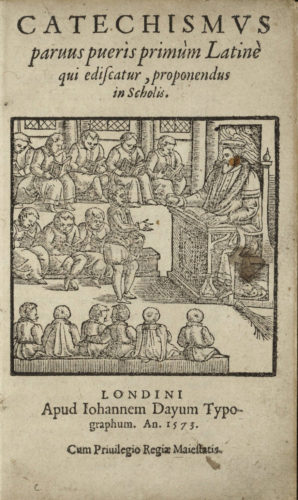At school, boys sat on benches roughly grouped according to age and ability, as shown in this picture. The benches, which were called ‘forms’, were numbered, so the sixth form was the sixth bench where the older boys sat.
The schoolmaster, seated at the front and wearing an academic gown, is presenting an apple to a good student as a reward. On the floor lies a ‘switch’ of twigs to punish any lazy or negligent pupil.
Click on the apple to reveal another reward that a student might receive.
Click on the switch to reveal his punishment if he gets his lesson wrong.













